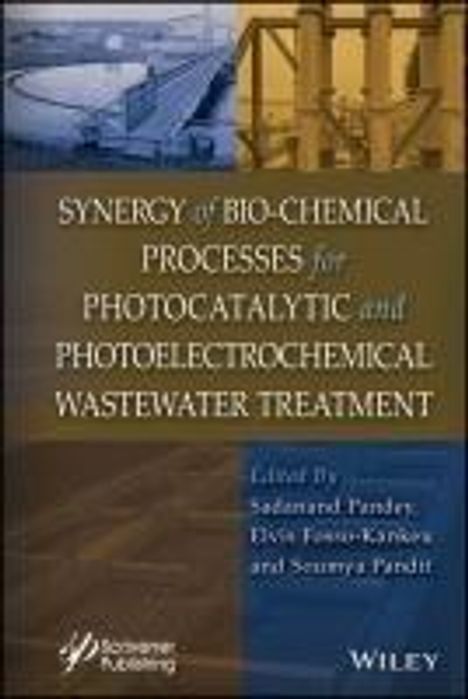Synergy of Bio-Chemical Processes for Photocatalytic and Photoelectrochemical Wastewater Treatment, Gebunden
Synergy of Bio-Chemical Processes for Photocatalytic and Photoelectrochemical Wastewater Treatment
(soweit verfügbar beim Lieferanten)
- Herausgeber:
- Sadanand Pandey, Elvis Fosso-Kankeu, Soumya Pandit
- Verlag:
- Wiley, 10/2024
- Einband:
- Gebunden
- Sprache:
- Englisch
- ISBN-13:
- 9781394197873
- Artikelnummer:
- 11741041
- Umfang:
- 288 Seiten
- Gewicht:
- 281 g
- Erscheinungstermin:
- 22.10.2024
- Hinweis
-
Achtung: Artikel ist nicht in deutscher Sprache!
Klappentext
The concept of photoelectrochemistry applied to microbial fuel cells could be the future of sustainable wastewater treatment and for hydrogen recovery as a valuable energy source.
With the increase of recalcitrant organic pollutants in industrial wastewater, the need for a sustainable bio-electrochemical process has become pressing in order to ensure that treatment processes are coupled with some beneficiation advantages. Microbial fuel cells combine wastewater treatment and biological power generation. However, the resistance of these organic pollutants to biological degradation requires further adjustment of the system to improve sustainability through maximization of energy production.
Solar energy conversion using photocatalysis has drawn huge attention for its potential to provide renewable and sustainable energy. Furthermore, it might be the solution to serious environmental and energy-related problems. It has been widely understood for several years that the top global issues today are concerned with securing a clean supply of water and ensuring a reasonable price for clean energy. Researchers are studying advanced materials and processes to produce clean, renewable hydrogen fuel through photocatalytic and photoelectrocatalytic water splitting, as well as to reduce carbon dioxide from the air into fuels through photocatalysis. Limited progress is occurring in these areas.
The purpose of this book is to comprehensively cover the evolvement in the conceptualization and application of photocatalytic fuel cells, as well as make a critical assessment of the contribution in the field of sustainable wastewater treatment and renewable energy production.
This book contains nine specialized chapters that provide comprehensive coverage of the design of photocatalytic fuel cells and their applications, including environmental remediation, chemical synthesis, green energy generation, model simulation for scaling up processes and implementation, and most importantly maximization of hydrogen evolution, recovery, and applications.
Audience
A wide audience of academics, industrial researchers, and graduate students working in heterogeneous photocatalysis, fuel cells, sustainable chemistry, nanotechnology, chemical engineering, environmental protection, and surfaces and interfaces, will find this book useful. The book is also important for professionals, namely environmental managers, water treatment plants managers and operators, water authorities, government regulatory bodies officers, and environmentalists.


